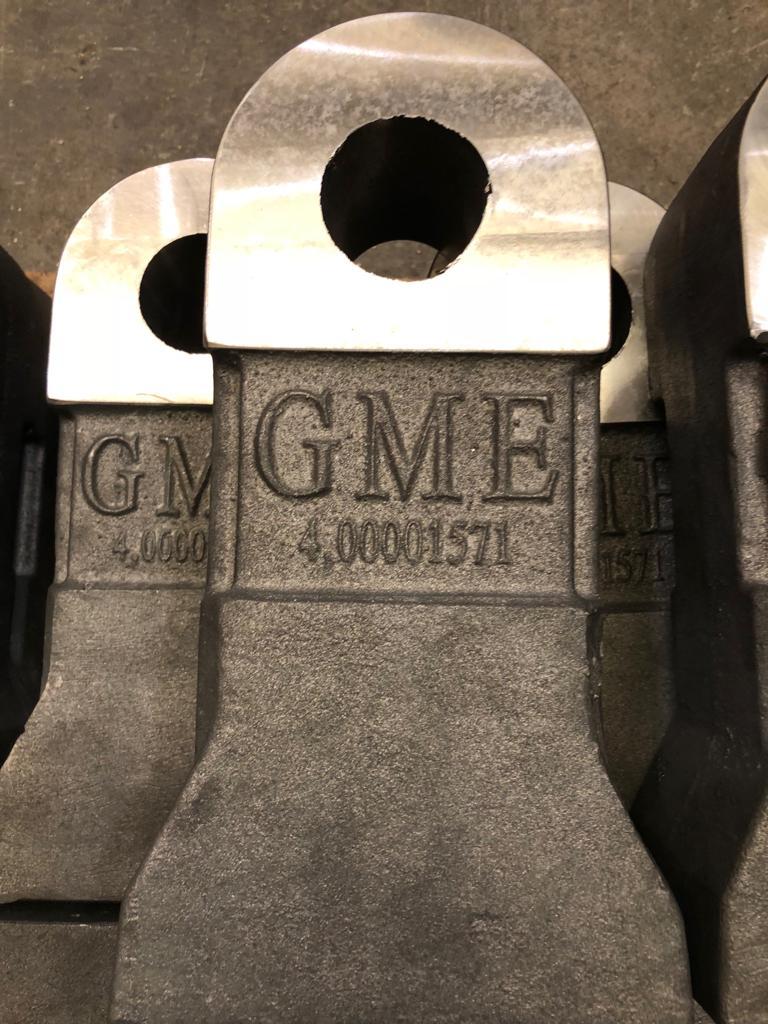GME’s primary goal is to develop and implement efficient methods to recycle used lead-acid batteries in an environmentally responsible manner. An essential piece of equipment that plays a pivotal role in this process is the Hammer Mill, which I will introduce and explain its importance in a lead battery recycling plant.
The hammer mill for lead battery recycling carries out the shredding of battery parts coming from hammer crasher.
A Hammer Mill is a type of industrial machine that is widely used for size reduction and material processing in various industries, including lead battery recycling. The purpose of this machine is to crush and shred large materials, such as used lead-acid batteries, into smaller fragments, making them more manageable for further processing. This is achieved by utilizing a series of rotating hammers, which are mounted on a central shaft within a sturdy, enclosed casing.
In a lead battery recycling plant, the Hammer Mill serves as a critical first step in the process of breaking down used batteries. By reducing the size of the battery components, the machine allows for the effective separation of valuable materials, such as lead, lead oxide, and lead sulfate, from other components like plastic casings and separators. This size reduction is essential for efficient recycling, as it enables the effective extraction of lead and other valuable materials for reuse.
Moreover, the Hammer Mill’s ability to reduce battery components into smaller fragments facilitates the safe and environmentally friendly handling of toxic materials. It minimizes the release of hazardous particles into the environment and helps prevent potential health risks to workers in the recycling facility. By employing a Hammer Mill in the recycling process, we can maximize the recovery of valuable materials and minimize the environmental impact of lead battery disposal.
The Hammer Mill is a crucial piece of machinery in a lead battery recycling plant. Its role in size reduction and material processing not only streamlines the recycling process but also helps minimize environmental risks associated with lead battery disposal. As engineers in the lead battery recycling industry, we are committed to continuously improving the efficiency and sustainability of these processes to better serve our communities and protect our environment.

New GME T-shape Hammers & discharging Grids to precisely crush and facilitate the separation
Which parts includes the hammer mill for lead battery recycling?
The Hammer Mill for lead battery recycling consists of several key components, each playing a vital role in the efficient size reduction of battery materials. The main parts of a Hammer Mill include:
- Casing: The casing is the outer structure of the Hammer Mill that encloses the internal components. It is typically made from robust materials, such as steel, to withstand the high impact forces generated during operation. The casing also helps contain dust and prevent the release of harmful particles into the environment.
- Rotor: The rotor is a central rotating shaft mounted with several hammers. The rotor’s rotational motion is responsible for driving the hammers and providing the necessary kinetic energy for material crushing.
- Hammers: Hammers are the primary crushing components in a Hammer Mill. They are mounted on the rotor and are typically made of hardened steel or other wear-resistant materials. As the rotor spins, the hammers swing out and impact the battery materials, breaking them into smaller pieces.
- Screen: The screen is located below the hammers and serves to separate the crushed materials based on size. It consists of a perforated metal sheet or mesh, which allows smaller fragments to pass through while retaining larger pieces for further size reduction. Screens can be customized to achieve the desired particle size for specific recycling processes.
- Feed hopper: The feed hopper is the entry point for battery materials into the Hammer Mill. It is designed to safely guide the materials towards the hammers while preventing any accidental contact with the rotating components.
- Discharge chute: The discharge chute is positioned beneath the screen and serves as an exit point for the size-reduced materials. It typically leads to a conveyor system or another piece of processing equipment, facilitating the seamless transition to the next stage of the recycling process.
- Drive system: The drive system powers the Hammer Mill, providing the necessary torque and speed for the rotor’s rotation. It usually consists of an electric motor, coupled to the rotor via belts or gears, and can be designed to provide various speed and power configurations based on specific application requirements.
By combining these critical components, the Hammer Mill for lead battery recycling effectively crushes and reduces battery materials, enabling efficient and environmentally friendly recycling processes.
Comments are closed.





